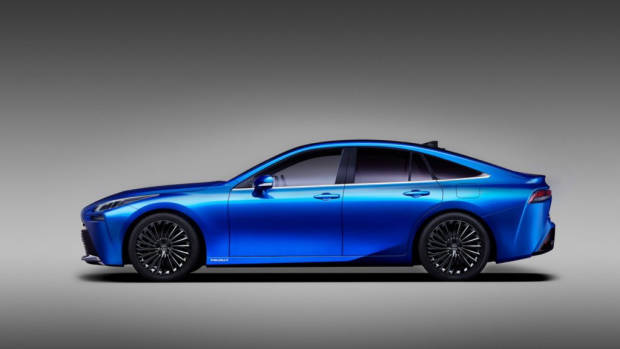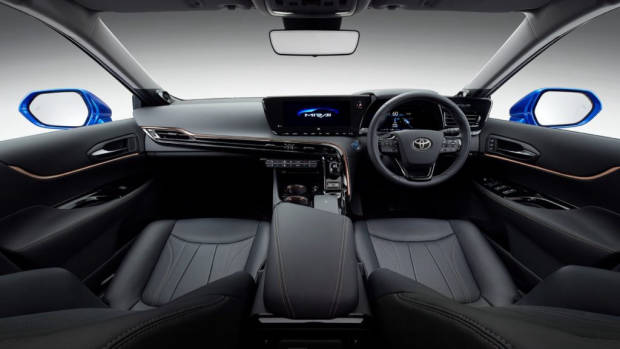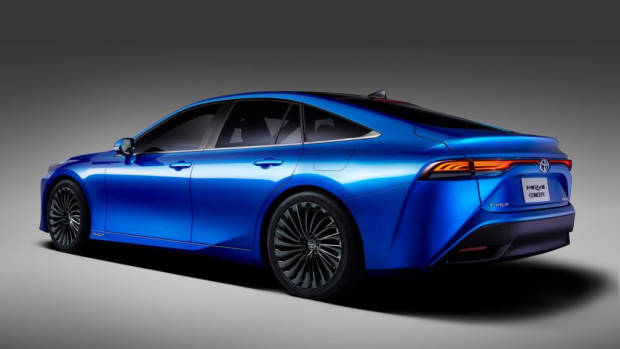-
Car Reviews
- Car News
-
Car Comparisons
Latest comparisons
- Chasing Deals
Toyota has revealed a second-generation Mirai hydrogen fuel-cell sedan ahead of its debut appearance at the 2019 Tokyo Motor Show. Staggeringly more handsome than the awkward first-gen Mirai, the new-gen vehicle differentiates from the increasingly crowded pack of electric vehicles.
Hydrogen fuel-cell powered vehicles offer an alternative vision for zero-emission motoring; their relatively conventional refuelling method and the lightness of the fuel are huge drawcards, but underdeveloped (and expensive) infrastructure and ongoing development of a more stable way to transport hydrogen fuel continue to hold the fuel source back.
Electric vehicles have progressed at a faster rate, with 2019 being packed full of EV releases. The recent IAA Frankfurt Auto Show saw the launch of several new EVs, including the Volkswagen ID.3, the Honde E, and the Mini Cooper SE – and we’re likely to see plenty more on the electric front at this month’s Tokyo Motor Show.

Toyota’s commitment to developing a new Mirai – which translates as ‘future’ – shows that hydrogen is still in the game, however. The first car might have looked odd but it sold relatively well for a niche vehicle – Toyota claim 10,000 units moved in five years, with the majority of sales coming in from the United States and Japan. For the second generation, Toyota has completely re-styled the four-door sedan while claiming a 30% increase in range to a usable 500km total.
Exterior design of the Mirai looks to fuse elements of upper-crust Lexus and contemporary Toyota. A bonnet-bulge reminiscent of the A90 Supra merges surprisingly well with front grilles lifted from the Camry.
A fastback style sloping roofline and rear panel reminiscent of a Lexus LS complete the smart looking rear end. Much like Tesla’s Model 3, the new generation Mirai shrugs off the dorky eco-friendly look instead birthing a sleek, contemporary, and approachable vehicle.

Inside the Mirai looks resolved, blending some elements of modern Toyota cabins with what appears to be a variety of Lexus-esque finishes. Evidently, there will be plenty of tech inside, Toyota have confirmed a digital instrument panel, and 12.3-inch centrally mounted touchscreen to wrap-around the driver.
Underpinning the Mirai is the rear-wheel drive TNGA-L platform, from which Toyota are claiming impressive chassis stiffness. This platform architecture is shared with Lexus and used on Toyota’s premium models. Toyota say this platform was developed from the outset with Hydrogen fuel cell capability in mind. This bodes well given the athletic attributes found in Toyota’s recent latest, perhaps even pointing to a future hydrogen fuelled sports car.
From the sounds of it Toyota have indeed strived to develop an athletic car with the Mirai. Chief engineer of the project Yoshikazu Tanaka said “I want customers to say ‘I chose the Mirai not just because it’s an FCEV but because I simply wanted the car’”.

Compared to the previous Mirai, Toyota claim significant upgrades to the Hydrogen fuel system. Alongside the claimed 30% range improvement, Toyota are also claiming much more linear and controllable throttle response, and we can expect an increase in power from the 114kW found in the first-gen car.
Unfortunately, we’re unlikely to see the new generation of the Mirai arrive downunder for 2020. The quicker refueling potential compared to EVs is fantastic, but requires significant infrastructure to implement. Toyota Australia are currently running a small fleet of first generation Mirai sedans asses their potential here.
With longer range and quicker fueling potential, it’s arguable that hydrogen fueled vehicles a more sensible choice than pure EVs for the Australia market. Toyota are claiming this project is more than just a concept car, and that the Mirai is the beginning of a “Hydrogen energy society”.
We wait with bated breath for more information on the stylish Mirai concept. The concept will be fully unveiled alongside Toyota’s LQ concept at the Tokyo Motor Show later this month.
Latest news
About Chasing cars
Chasing Cars reviews are 100% independent.
Because we are powered by Budget Direct Insurance, we don’t receive advertising or sales revenue from car manufacturers.
We’re truly independent – giving you Australia’s best car reviews.